absence
How does one produce a question - only way to animate a project is to animate a question towards it,
stop posing questions to the Jberg Biennial
rhetoric
how do we track rhetoric
rhetoric emerging in catalogue as a way to find questions
they are articulating their agenda for them
Anthony Gardener - Charles Greens text - doesn’t step far away enough from exhibition to properly address it
(curator group look at this text critically)
Absences
Africus Institute for Contemporary Art (AICA)
Double absences - no nationally-based, but no no nationally-based
Absence in its contribution to conversation
Those relationships between sites and ideas never get enacted (in that specificity)
extending discourses - never got to happen
Following Trinh T Minh Ha, we’re allowing the story, the storytellers, the witnesses and testimonies, and ourselves as investigators to shift positions, to constantly negotiate and slip past each other, positions itself across multiple positions, allowing obstructions, interruptions and mis-translations to enter into our working patterns. These slippery minor ruptures and disagreements signal other multiple truths and other presences.
handover of Hong Kong, Truth and Reconcilliation commission meeting,, Bouchra Khalili and Naeem Mohaimen, Non Aligned Movement 1979 - Dhaka bangaldesh that never took place, The other moderns - simon njami HKW 1997, Taiwan pavillion at Venice
*Massumi - not capturable, the overload, the missing half second, immediate moment before, not possible to take anything out,
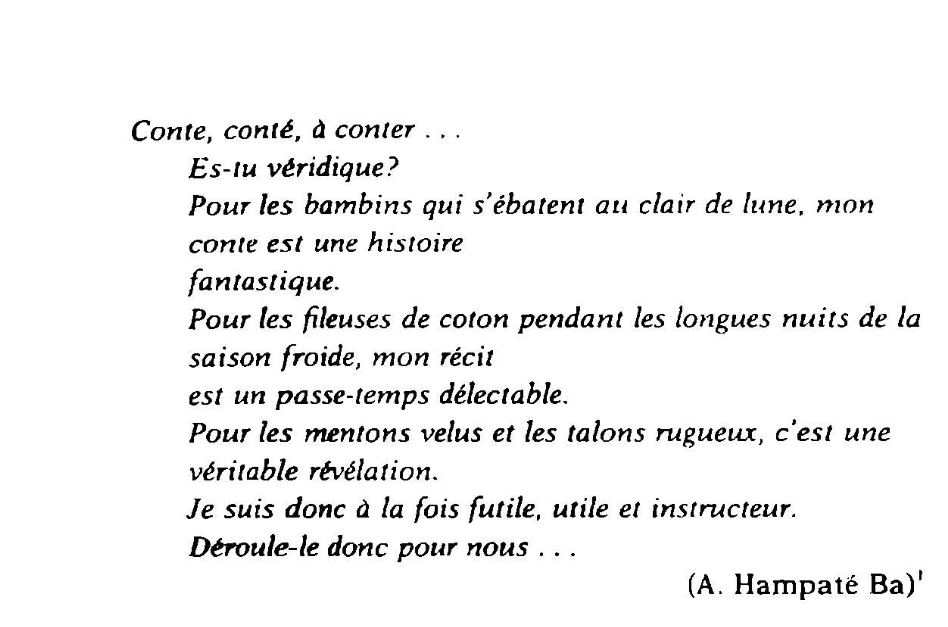


GLOSSARY
ABSENCE
Foucault: Archeology of Knowledge (p.118, 123)
Everything is never said in relation to what might have been stated in
verfication - non-filling
frontality - nothing is complete
Foucault: Nietzsche Genealogy History (p.79)
site of truth, absolute distance, origin, recovery - false recognition, inevitable loss, discourse obscured and lost, truth = error = unaltered form in history
TRUTH
Trinh Minh-Ha
STORY & STORYTELLER (DELIGHT MAKER)- SHIFTING POSITIONS
ANTERIORITY
Bouchra Khalili & Lepecki
SINGULARITY
TESTIMONY
Kader Attia & Isabelle Stenghers
INVISIBILITY
IDIOT
COSMOPOLITICS
SUPPLEMENT
SILENCE
Hayward: Absolutely Postcolonial
UNCERTAINTY
CONSTELLATIONS
COMMON (collective)
Nancy, Being Singular Plural
vs the whole
compassion
Nancy: Subtitiles, After Fukushima, p.3-5)
CATASTROPHE (paradigm of how a catastrophe gets interpreted?)
art market? Capitalist context, hierarchical spaces?
OUR ABSENCE:
phallacy of the whole - absence as a critique of the whole
our desire: a disturbance?
sharing singularities as a methodology
CONSTELLATIONS
double absence?
questions of exclusion: socio-political
QUESTIONS TO TAMAR GARB
What were the gaps in the Joburg Bienniale?
How can we start from the middle in this case study?
Which other exhibitions do you see related?
How did the curators collaborate and how did it affect the bienniale?
How did the audience react? Who was the audience?
19 April 2020. after 2hrs 10mins:
"Subtitle is a supplement for absence."
FOR FURTHER READING // IDEAS
> Michel Serres 'The Parasite' << satellite exhibition
> Parasite (Film)
> How do the minor groups infiltrate back? DOUBLE PARASITE?
QUESTION TO ADNAN
In our research group, we are thinking through absence in relation to the second Johannesburg biennale, and the notion of singularity as a disturbance to a whole. How can we use singularities (via Jean Luc Nancy) as an analytical tool to think non-frontally around this post-national moment, including but not restricted to, the biennial?
BOUCHRA KHALILI
THE TEMPEST SOCIETY
2017
ELABORATE A GLOSSARY
>> choose 2-3 terms
>>>> SILVIA:
absence of representation
- Truth & Reconciliation Commission (1996-1998)
- Other Modernities (1997)
- Shiraz Persepolis (Shiraz, Iran - 1963 - 1973)
- Havana World Fair (Havana, Cuba -1971)
- The First World Festival of Negro Arts (Dakar, 1966)
- Non-Aligned Movement summit (cancelled, Dhaka, Bangaldesh 1979)
- Africa Remix? (touring, 2004-2007)
- Johannesburg Biennial 1995
- Johannesburg Biennial 1997
- various violences and events 1990s (eg. Nancy list)
RECAP Silvia & Siegrun, 24.05.2020
Stuart Hall text
>> idea of creolisation
>>>> not problematized enough?!
absence is not absence of representation
Decolonizing Education, UCL seminar
>> anthropological methodologies of connecting with people
Sarah Pierce
Unavowable Community (Blancho, 1983)
>> figurre of the rebel
Undercommon
>> student who is not ready to leave university
Bridget Crone
Bodies of Water - Hydrofeminism (Niemanis)
Adnan
Maleficiant Environment by Baudrillard
>>>> political agency in focus
>>>> the idea of distance
>>>> the idea of the struggle
>>>> music? >> Hugh Masekela (Theaster Gates)
>>>> absence of a starting point - weaving - starting from the middle - whole frame will support itself
>>>> instead of solida -- constellation
>>>> idea of the 'ma' (Japanese painting, at least from the 16th cty) - empty space - unpainted area in the image - the white, negative
>>> creation of the negative space
Esposito
Community
Constellations of communities
MA POEM
Thirty spokes meet in the hub,
though the space between them is the essence of the wheel;
Pots are formed from clay, though the space inside them is the essence of the pot;
Walls with windows and doors form the house,
though the space within them is the essence of the house.
間, which in Japanese is pronounced chiefly as ma.
Originally, this character consisted of the pictorial sign for “moon” (月) — not the present-day “sun” (日) — under the sign for “gate” (門). For a Chinese or Japanese using language consciously, this ideogram, depicting a delicate moment of moonlight streaming through a chink in the entranceway, fully expresses the two simultaneous components of a sense of place: the objective, given aspect and the subjective, felt aspect.
(https://kyotojournal.org/culture-arts/ma-place-space-void/)
https://www.on-curating.org/issue-40-reader/portfolio-dont-follow-the-wind.html#.Xsq3KTngrIU
Meeting 07/06/2020
What angle we can give to our interviews?
[Affect seem to focus on installation
Narratives-maybe on the speechless ones?]
Biennale as a promise—promise an as absence that we have just come to release as such because we don’t know when the problem will be fulfilled.
Interview with co-curator Abrie Fourie on the desire/planning of the project rather than result
Mohan Ambikaipaker Political Blackness in Multiracial Britain
Bandung conference 1955 was the spirit before the conference, moment of solidarity that could have been
Our effort might be on capturing the moment before the biennale
To pick up from last seminar, Vali and his timeline as constellation-maybe something we can use Hotglue for:
https://digitalarchive.wilsoncenter.org/collection/16/bandung-conference-1955
if we look at the moment before the biennale with its euphoria and joy- we could look at sensation exhibition that might have triggered an answer- the unspeakable (as mentioned by Tamar Garb)
Biennale not interested in the local scene- who is reclaiming what narrative?
Different shades in people’s skins, other minorities, other complexities; what position are we assuming in/towards this research?
Not erasing people All points back to the responsibility!
Tensions in different demands in geography; the demand to perform the traditional, the local, while other groups see the local as less valuable in the scale and they demanded the new, the global
Tamar- internal migration before the biennale
Echoed in trade routes and diaspora in global scale, but In reality, in the local scale with people moving from place to place within South Africa- dynamics of situations
Tension of looking at the horizon while maintaining the historical responsibility and between these two situations, the specific and the philosophical
Un-reconciliation—maybe Sarah Pierce?
Events as constellation, so some more visible and some less evident in the starred sky
Koyo Kouh as a potential interviewee
http://www.rawmaterialcompany.org/_RAW_home
We started deconstructing the meaning of absence, not always intended literally but give us a point to move from and it keeps on shifting;
So we are not fixing absence as one thing-the notion itself is kept slippery, examining the biennial is a tension
20/06/2020 Meeting
Absence group – what it allow us to do
Type of collective process
Type of materials we went trogh
Absence group to lacunae
How to record – tha anarchive
Deleuze cinema 2
Lacunae workshop during the summer
Introduction
struggles?
change of names
what are we looking for?
move away from way of locating the problem?
>> more significant is what we're doing together!
we're letting things take us into different directions
engaging with the bienniale in ways that are not yet structured yet
our collaborative engagement
Silvia: the ma and supplement & poem from lang tse tsu (?): will is space that connects rails that are spaced out
research questions?
our plan of having a workshop -
Questions
Trinh Minh-Ha
"Women, Native, Other" (Trinh-Minh-Ha)
Question to Massumi & Manning
"How can we record our research?"
"How close and far can we go from the Johannesburg Bienniale?"
My question is how do you make visible the traces, the movement of the thinking in action?
We are in the absence group, that will be soon change its name to the Lacunea group.
We are working very collaboratively elaborating our questions through weekly sessions where our thoughts are being built by each of us (we are 5) talking, listening to one another, making free association, with a lot of kindness.
We are focused on how we can go back to the promise of the biennale to how we can receive it today. As we as the today community of the exhibition.
Since we started, we went through a lot of material from Jean-Luc Nancy notion of singularity, community, but also through text on postcolonialism, constellations of fragments, negotiating with reality from Nora Sternfeld, Bouchra Khalili The Tempest society. W.G Sebald the emigrant, etc. etc.
But we are struggling now with the question of how we can make this whole process visible, how can we keep record of our collective process of thoughts in order to share it?
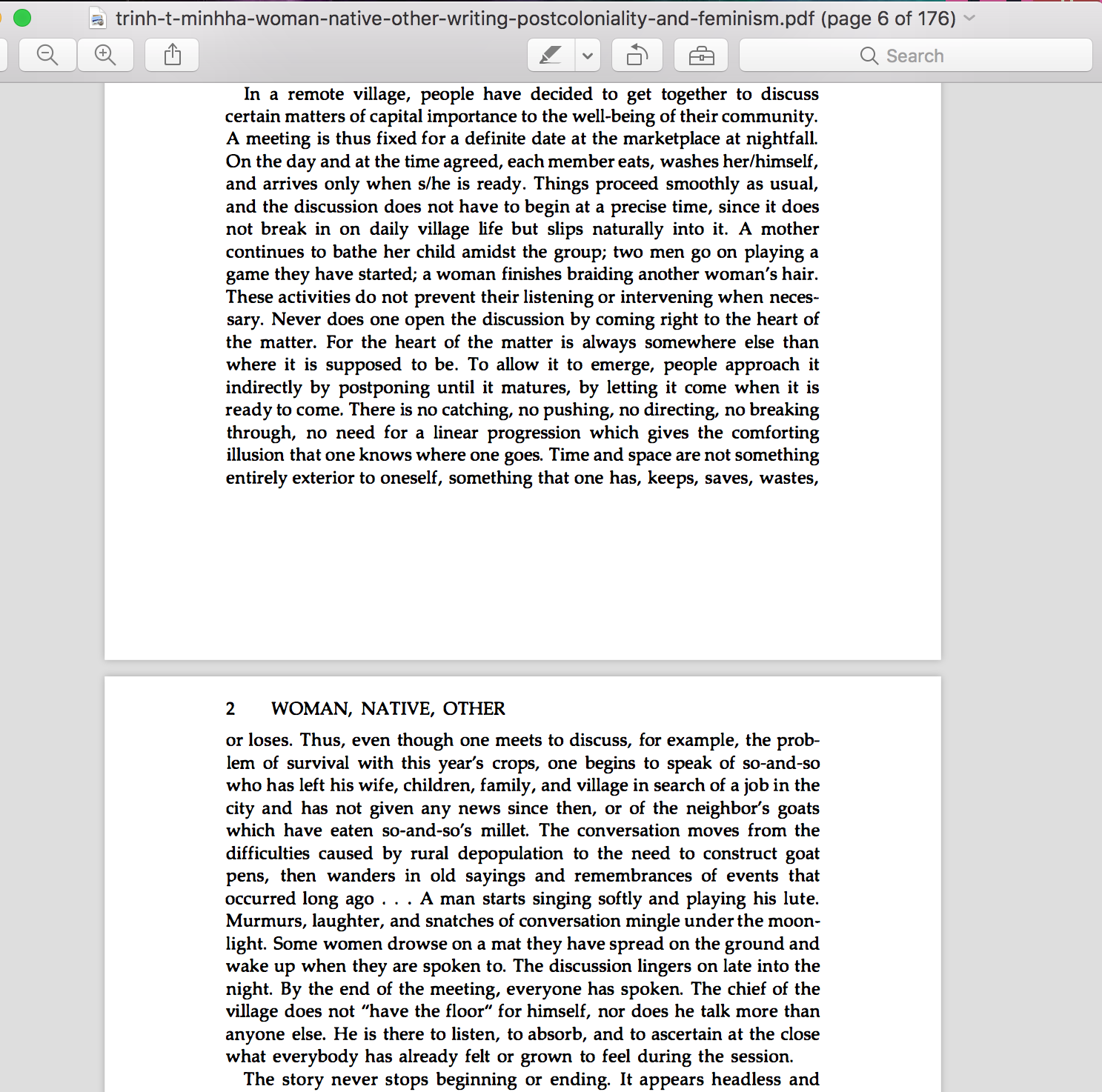
Pierre Perrault "La suite du monde" in Cinema 2 (Gilles Deleuze)
reality cinema - camera
activity inherited from ancestors/ indigenous - storytelling alongside other stories
>> in relation to direction in "Tempest Society" (Bouchra Khalili")
Presentation-Performance 22/06/2020
idea of the interval (like in Bouchra-Khalili's film)
Operative Set of Questions:
- readings
- interjectons with questions to form a structure
- Bouchra Khalili film snippets
- snippets of our recording
- fragmentary lost moments on the periphery (snippets from Naem's video Algiers conference)
0. Introduction "Women, Native, Other" and the idea of palaver - our methodology, our sessions (Ayesha) - 3min
1. Poem - mistranslation and weaving (Siegrun) - 1-2min
Q - (Zoe): How do we record our research and progress?
2. Cinema 2 - storytelling - power of the false - camera (Mariam & Siegrun) - 6min
Q - (Silvia): How do we talk about absence without centering representation?
3. Singularities - Postcolonial Approach - fragments beyond the postcolonial (Mariam) - 2min
Q - (Ayesha): whose voice? reproduction of the bienniale conditions that erased voices and participation and what was meant to say?
4. Bouchra Khalili film - how to give voices to the ones with no voices (Zoe) - 3min
Q - (Siegrun): How do we dialogue with the bienniale?
5. idea of the supplement and the ma (Silvia) - 2min
Q - (Mariam): How do we think about the community of this exhibition and in the contemporary sense? (Esposito)
6. (Ayesha & all) change to lacunae group - 3min
Future: idea of the 3 day workshop - go to the moment before the bienniale - to the now - to the future?
TO DO:
gifs of the films - Bouchra, Pierre Perrault fim (ZOE, MARIAM)
quote Sarah Pierce idea of the community of the exhibition (ZOE)
upload texts/ images / titles from our texts, other events (Dakar 66) (SIEGRUN)
Poem connected to MA (SILVIA)
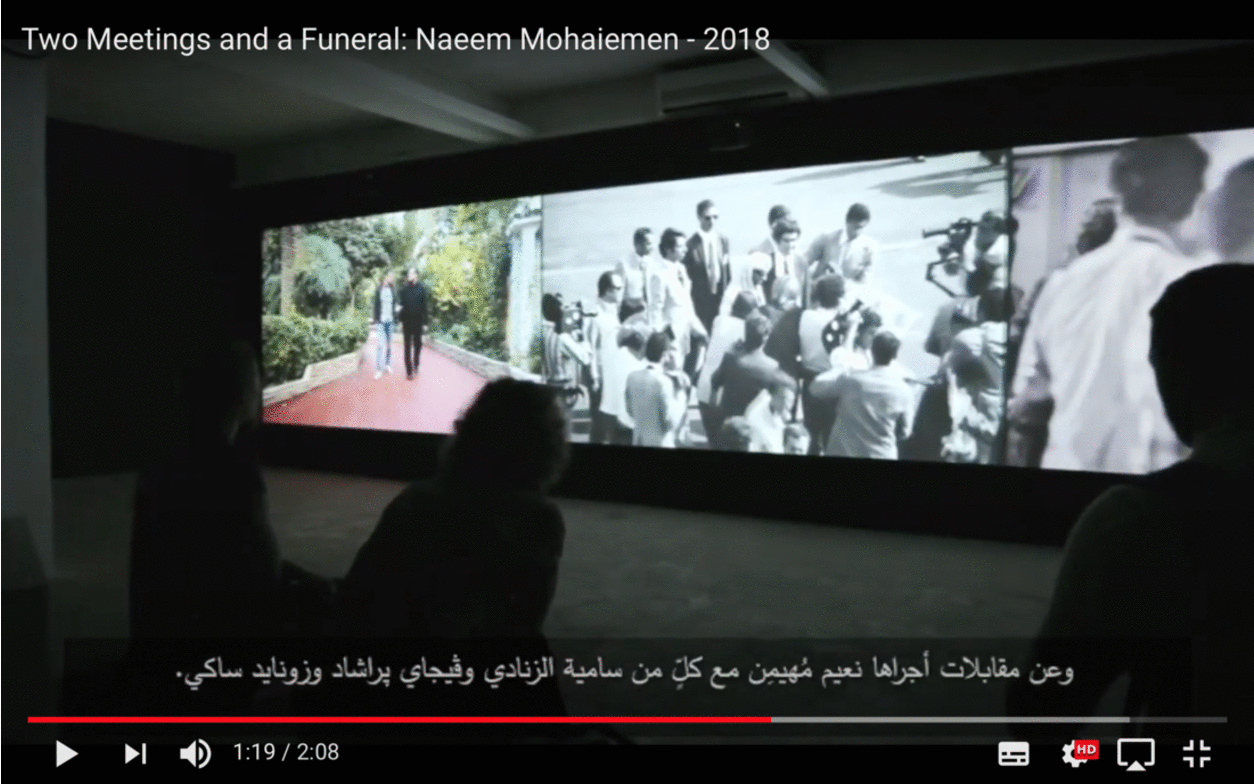
case study
the bienniale >> as questions?
How do we mantain a position that doesn't jeopardize this case study and doesn't make this case study into another colonial context/research?
weaving - Glissant quote
the in-between two things
"Opacities can coexist and converge, weaving fabrics. To understand these truly one must focus on the texture of the weave and not on the nature of its components."
(Edouard Glissant)
list of struggles:
- representation
- notion of the colonial/ power infrastructure - reproduction of the bienniale conditions that erased voices and participation?
- How can we record our research?
- How do we want to put together all these materials (of the different groups)?
- What do we want to address?
- positioning? Who are we? Who we're speaking about?
- how do we dialogue with this bienniale? >> sarah pierce idea of the community of the exhibition
"Now I understand that what they wanted to think about is how we are not mainly governed by representation any more, but by infrastructures….
In fact, the critique of representation is actually a critique of society through representation. What does it mean for us, when we are not anymore mainly governed by representation? It would imply that we would also need to analyse other things – other than representation – in the world and in institutions. And what I understood now, more and more, as we work on this topic of infrastructure, is that it makes absolute sense to analyse and change the structural level as much as the representational one."
(Nora Sternfeld talking about the Bergen assembly)
Mid 17th century from Latin, ‘pool’, from lacus ‘lake’.
=gap, space, absence, lack, deficiency, blank, lacuna
"blank or missing portion in a manuscript," 1660s, from Latin lacuna "hole, pit," figuratively "a gap, void, want," diminutive of lacus "pond, lake; hollow, opening" (see lake (n.1)). The Latin plural is lacunae. The word has also been used in English from c. 1700 in the literal Latin sense in anatomy, zoology, botany. The adjectival forms have somewhat sorted themselves: Mathematics tends to use lacunary (1857), natural history lacunose (1816), and lacunar (n.) is used in architecture of paneled ceilings (1690s), so called for their sunken compartments. Leaving lacunal (1846) for the manuscript sense.
Mid 17th century from Latin, ‘pool’, from lacus ‘lake’.
=gap, space, absence, lack, deficiency, blank, lacuna
"blank or missing portion in a manuscript," 1660s, from Latin lacuna "hole, pit," figuratively "a gap, void, want," diminutive of lacus "pond, lake; hollow, opening" (see lake (n.1)). The Latin plural is lacunae. The word has also been used in English from c. 1700 in the literal Latin sense in anatomy, zoology, botany. The adjectival forms have somewhat sorted themselves: Mathematics tends to use lacunary (1857), natural history lacunose (1816), and lacunar (n.) is used in architecture of paneled ceilings (1690s), so called for their sunken compartments. Leaving lacunal (1846) for the manuscript sense.
Mid 17th century from Latin, ‘pool’, from lacus ‘lake’.
=gap, space, absence, lack, deficiency, blank, lacuna
"blank or missing portion in a manuscript," 1660s, from Latin lacuna "hole, pit," figuratively "a gap, void, want," diminutive of lacus "pond, lake; hollow, opening" (see lake (n.1)). The Latin plural is lacunae. The word has also been used in English from c. 1700 in the literal Latin sense in anatomy, zoology, botany. The adjectival forms have somewhat sorted themselves: Mathematics tends to use lacunary (1857), natural history lacunose (1816), and lacunar (n.) is used in architecture of paneled ceilings (1690s), so called for their sunken compartments. Leaving lacunal (1846) for the manuscript sense.
"Thus, when Perrault criticizes all fiction, it is in the sense that it
forms a model of pre-established truth, which necessarily
expresses the dominant ideas or the point of view of the colonizer,
even when it is forged by the film's author. Fiction is inseparable
from a 'reverence' which presents it as true, in religion, in society,
in cinema, in the systems of images. Never has Nietzsche's dictum,
'suppress your reverences', been so well understood as by
Perrault. When Perrault is addressing his real characters of
Quebec, it is not simply to eliminate fiction but to free it from the
model of truth which penetrates it, and on the contrary to
rediscover the pure and simple story-telling function which is
opposed to this model. What is opposed to fiction is not the real; it
is not the truth which is always that of the masters or colonizers; it
is the story-telling function of the poor, in so far as it gives the
false the power which makes it into a memory, a legend, a
monster."
(Gilles Deleuze, Cinema 2, p.150)
workshop
3 days
guests - amplify/invite voices
publication
idea of the event (Manning)?
Thirty spokes are joined together in a wheel,
but it is the centre hole
that allows the wheel to function.
We mould clay into a pot,
but it is the emptiness inside
that makes the vessel useful.
We fashion wood for a house,
but it is the emptiness inside
that makes it liveable.
We work with the substantial,
but the emptiness is what we use.
Lao Tzu-Tao Te Ching
"Subaltern pasts are like stubborn knots that stand out and break up the otherwise evenly woven surface of the fabric."
(Chakrabarty, Provincialising Europe p.104)
ABSENCE
Ayesha
Mariam
Siegrun
Silvia
Zoe
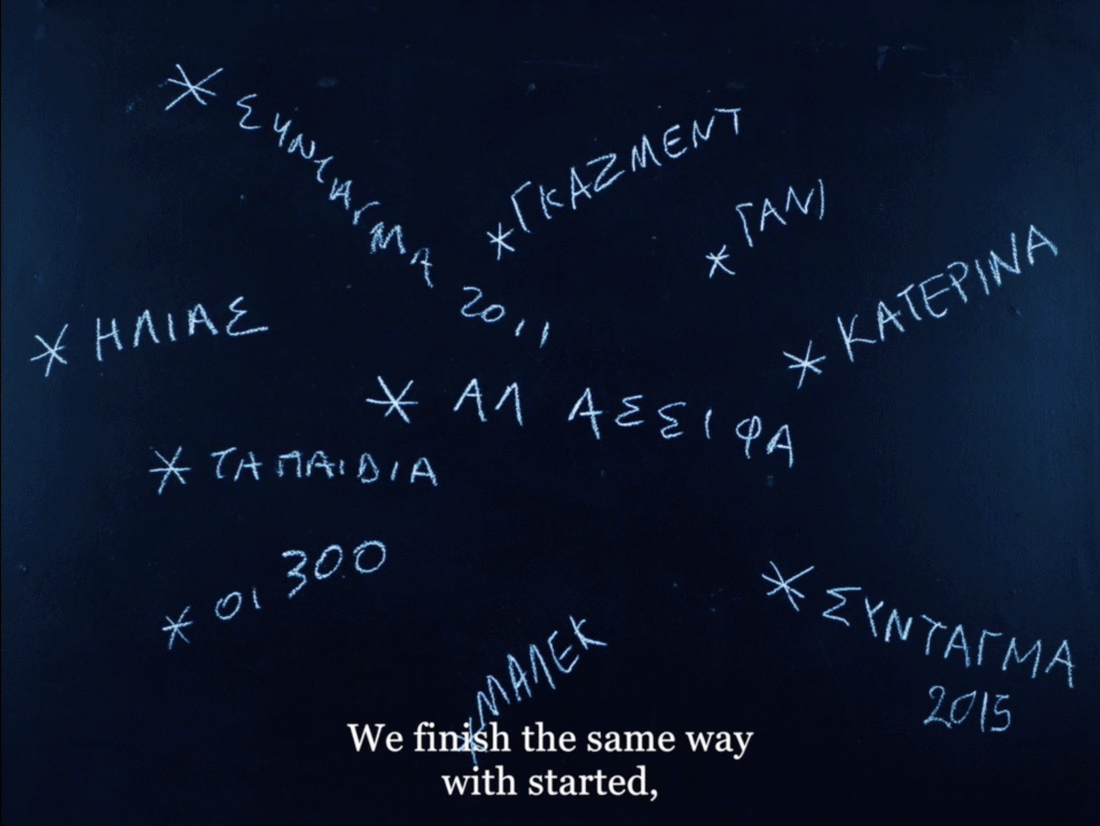

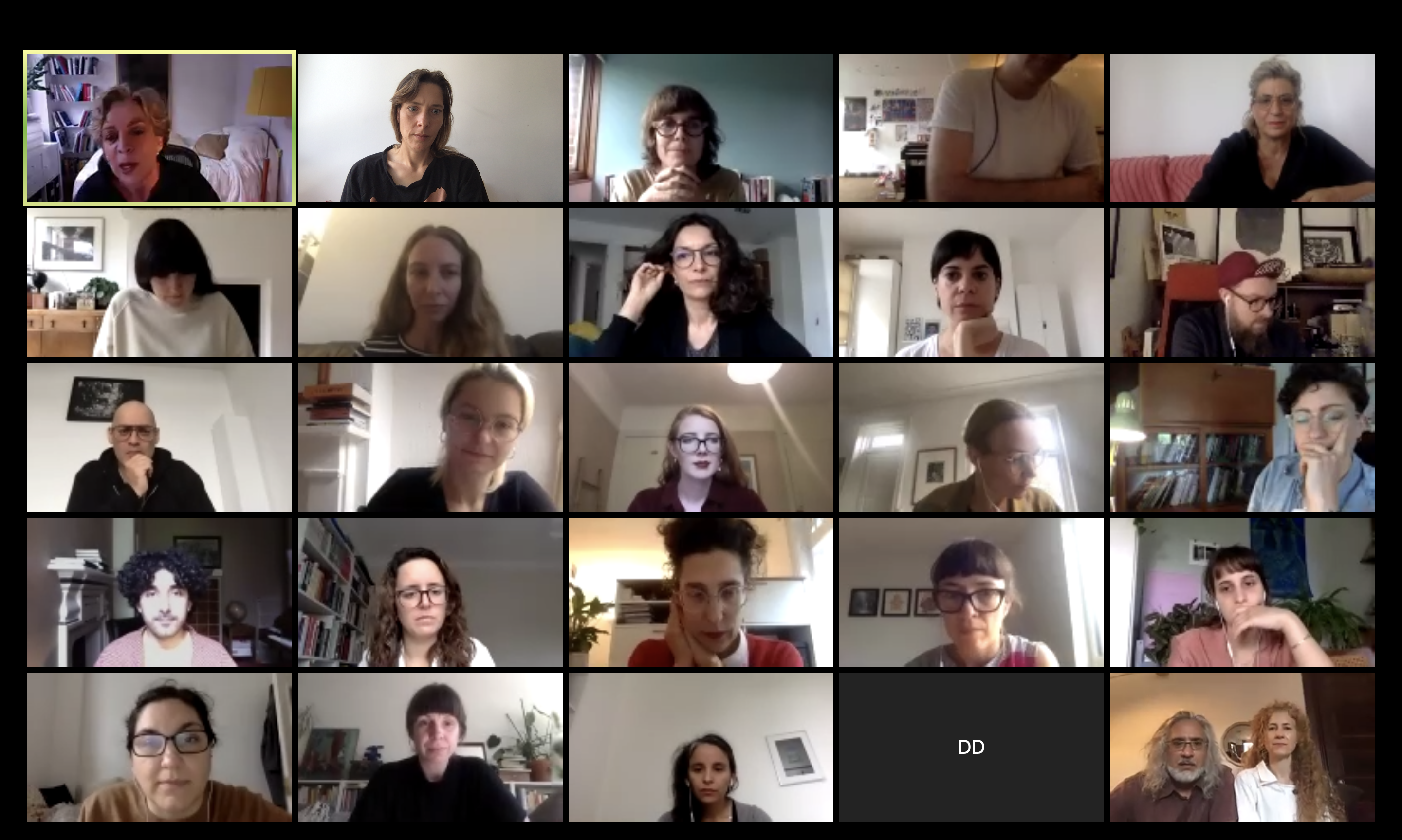
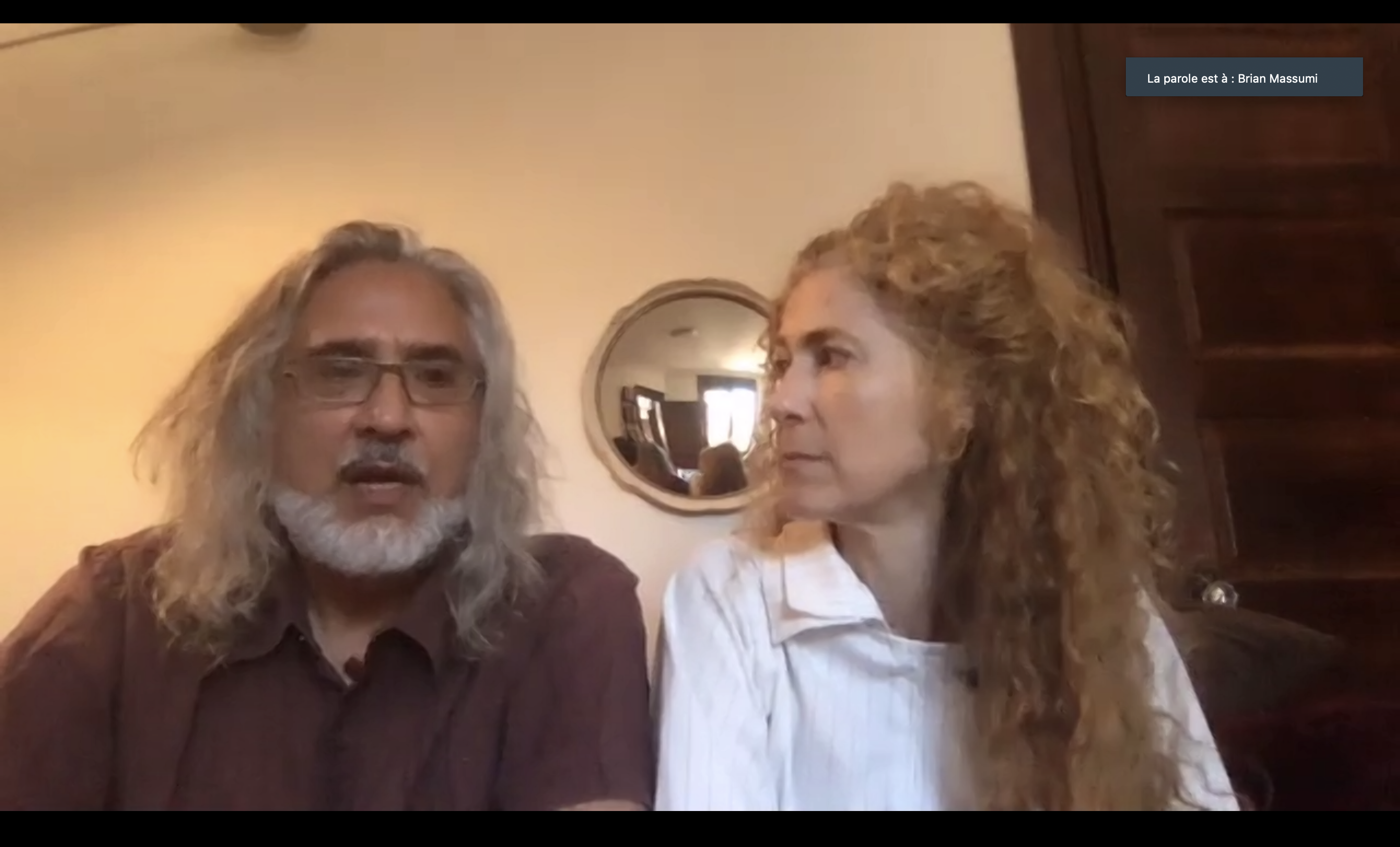
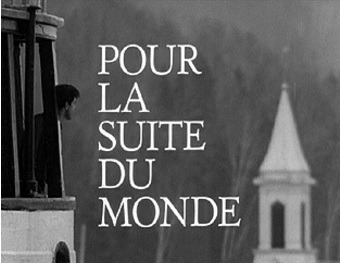
"Via de Duve, I would like to think such a radicality further, where the moment of exposition means taking up an address that runs across times; that perhaps was never “meant” for me. Across artworks, across exhibitions, and across institutions I enter a problematic without continuity, or commensurability, or a specified “time.” Where the promises of the exhibition orient to the future, the moment of exposition carries us through the exhibition, beyond what is present in the exhibition to a stark absence — our necessary disappearance, and the impossibility of the artwork’s continued “presence.” It is the seed of these inevitable departures that I am addressing in this section, as they rub against the seemingly immutable stability of works of art and the exhibitions that “hold” them as complete, unmoving, and somehow (always) “present.”"
Sarah Pierce PHD,It’s time man. It feels imminent. POLITICS AT THE MOMENT OF EXPOSITION - Part Two, p. 7 (not to be circulated without Pierce's permission)
"To theorise the community of the exhibition is to take up what is available at the moment of exposition — keeping in mind that “what takes place” is not always in the realm of the “visible real,” and that all “displays,” even so-named “permanent” ones, recede, disperse and disappear."
p.8, in : Sarah Pierce PHD,It’s time man. It feels imminent. POLITICS AT THE MOMENT OF EXPOSITION - (not to be circulated without Pierce's permission)
"Without producing a rule or code that precipitates what it means to come together, what would it mean to thematise the community of the exhibition as politicised knowledge that is not tied to a subject — because it is beyond the subject? A community of the exhibition that is unavowable through (or as) works of art. My concern is not so much what happens during the “gathering,” but rather what happens in the intervals, when community necessarily comes apart. This is the political question as I enter a discussion of the community of the exhibition. My question is not about what is consigned as “political” through exhibitions or works of art, but rather it is about a politics inherent in what remains unclaimed and unclaimable in the moment of exposition."
p.9, in : Sarah Pierce PHD,It’s time man. It feels imminent. POLITICS AT THE MOMENT OF EXPOSITION - (not to be circulated without Pierce's permission)
"narration ceases to be truthful, that is to claim to be true, and becomes fundamentally falsifying. This is not at all a case of 'each has its own truth', a variability of content. It is a power of the false which replaces and supersedes the form of the true, beacuse it poses the simultaneity of the incompossible presents, or the coexistence of not-necessarily true pasts."
(Gilles Deleuze, Cinema 2, p.136)
"Crystalline description was already reaching the indiscernibility of the real and the imaginary, but the falsifying narration which corresponds to it goes a step further and poses inexplicable differences to the presentand alternatives which are undecidable between true and false to the past.
The truthful man dies, every model of truth collapses, in favour of the new narration."
(Gilles Deleuze, Cinema 2, p.136)
“Here, truth and pleasure go hand in hand.”
(Trinh Minh-Ha, "Cotton and Iron" in: “When the Moon Waxes Red”, p.12)
What does it mean to work with stories and not testimonials?
First, there is a story told by yourselve, for yourselve - stories that are usually silenced - that begins to speak for those who cannot / no longer speak. When I say that the protagonists of my works tell their story, it is because that is factually correct. In Words on Streets and Living Labor for example, these are their own texts. In Mother Tongue, the texts belong to Édouard Glissant, Mahmoud Darwich, Aimé Césaire, but they become those of Naïma, Seynabou, and Naoual through the translation, the “creolization” of these texts, their performances.
Bouchra khalili in Artpress: BOUCHRA KHALILI – BLACKBOARD, July 24th 2018 https://www.artpress.com/2018/07/24/bouchra-khalili-blackboard/
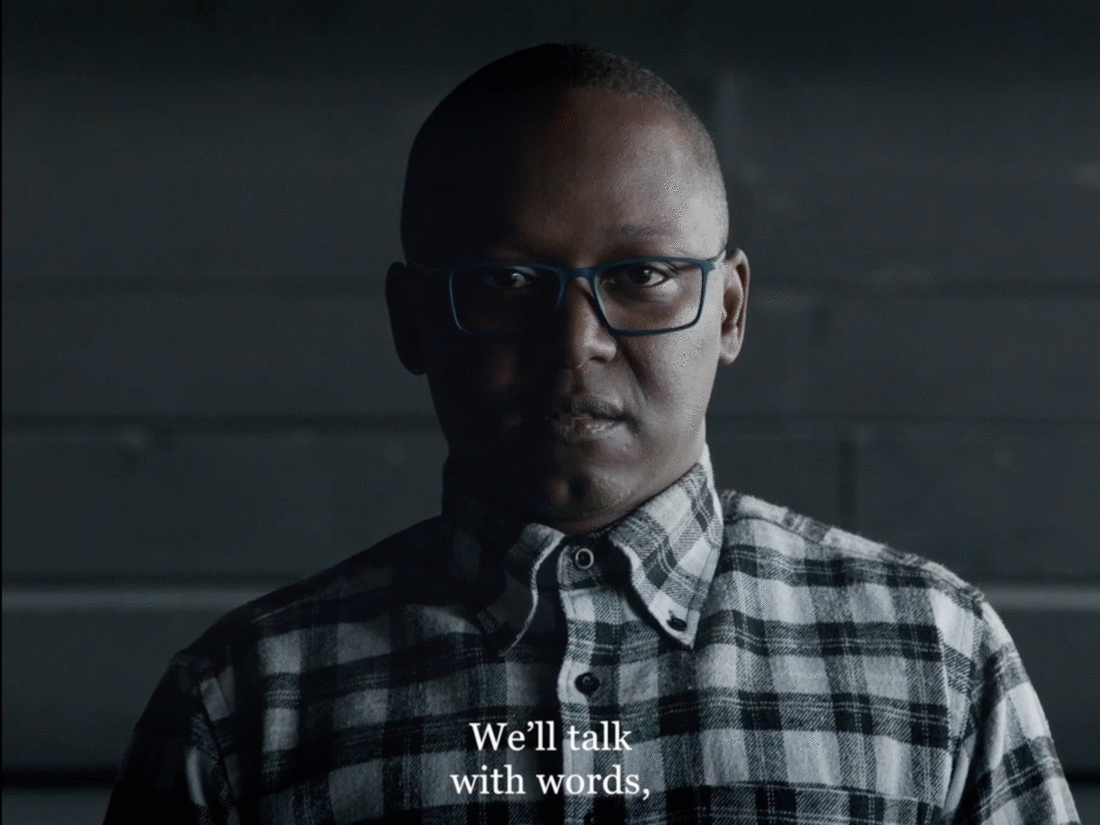
Meeting 21.10.2020, 7pm
Beginning of group:
>> Absence about the unheard voices in the project initiated by Ayesha's comment
Interest in gaps and fragments
Illegibility - in relation to conditions
Tensions & Frictions
>> It's not about inclusion/exclusion.
>> Change name to Lacuna since absence is marked by vagueness and abstraction
>> Absence was interesting as a concept to make us thinking together with presence.
>> Interest in absent audiences
>> Lacuna: more theoretical, more potential, more useful at this point
>> Key texts or influences: MANNING's feedback and ideas of the anarchive, PEIRCE texts
the community of the exhibition, the absent audience
>> the specifities inspire our abstract thinking
>> interviews need to be processed > we were thinking of reading absences/lacunae
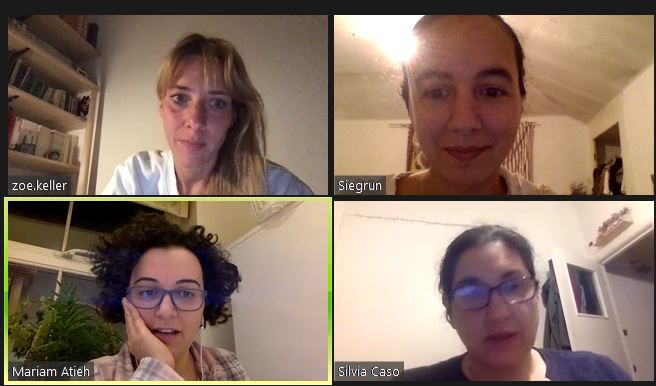
Presentation 5.11.2020
Questions:
Bridget: What haunts absences?
Anne-Julie: How to bring forward the frictions? How do you work with that?
Irit: letting the subject slip away
the subject is no longer the subject
decisions necessary
(one of the best work about absence and presence) by Walid Raad and Jalal Toufic?
THE HAUNTING ABSENT AUDIENCE
ADNAN:
speculation not on the absence but on the Jasper Jones - do something to it, do something else to it, do something to it, do something else to it
ethnofiction
imagination to not feel responsible to an origin, allowing to speculate -
BRIDGET:
not thinking absence in relation to presence -- what could the space of the specter be?
The specter would connect to the absence and speculation - persisting in the space
it might be
who was absent? turn back on it, not describe it? it's not about the enactment but about the tension in the space of too
persistent space of speculation or haunting
11.11.2020
we should look into haunting and specters
traces between appearance and disappearance
read and then write together
address the unheard and the unresolved
a character for the crowd
fabulation & fictioning
POSSIBLE REFERENCES (all text in whatsapp):
*Achille Mbembe - Necropolitics
*Mark Fisher - Writing on Depression, Hauntology and Lost Futures / The Metaphysics of Crackle. Afrofuturism and Hauntology
*Henriette Gunkel - Visual Cultures...as Time Travel / Futures & Fictions
*Sadiya Hartmann - Hayward Lives
*Jacques Derrida - Spectres of Marx
*Simon O'Sullivan - Fiction as Method
AND MORE TEXTS...
ZOE:
As I understand it the ghost is the one who cannot leave this world and make the passage to the world of the dead because something is unresolved, so the ghost has to haunt until he is heard by an innocent voice (usually a child). So as the chorus embraces/represent the crowd, the haunting/the ghosts might stand for the unresolved?